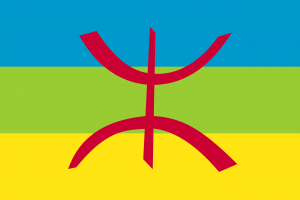Difference between revisions of "Language/Central-atlas-tamazight/Grammar/How-to-Use-Be"
m (Quick edit) |
m (Quick edit) |
||
| Line 55: | Line 55: | ||
|description=In this lesson, we will learn how to use the verb "be" in Central Atlas Tamazight. We will look at the different forms of the verb "be" and how they are used in different contexts. We will also look at some examples of sentences using the verb "be". | |description=In this lesson, we will learn how to use the verb "be" in Central Atlas Tamazight. We will look at the different forms of the verb "be" and how they are used in different contexts. We will also look at some examples of sentences using the verb "be". | ||
}} | }} | ||
==Related Lessons== | |||
* [[Language/Central-atlas-tamazight/Grammar/Pronouns|Pronouns]] | |||
* [[Language/Central-atlas-tamazight/Grammar/Conditional-Mood|Conditional Mood]] | |||
* [[Language/Central-atlas-tamazight/Grammar/Gender|Gender]] | |||
* [[Language/Central-atlas-tamazight/Grammar/Plurals|Plurals]] | |||
* [[Language/Central-atlas-tamazight/Grammar/Negation|Negation]] | |||
* [[Language/Central-atlas-tamazight/Grammar/Give-your-Opinion|Give your Opinion]] | |||
* [[Language/Central-atlas-tamazight/Grammar/Adjectives|Adjectives]] | |||
* [[Language/Central-atlas-tamazight/Grammar/Questions|Questions]] | |||
{{Central-atlas-tamazight-Page-Bottom}} | {{Central-atlas-tamazight-Page-Bottom}} | ||
Revision as of 12:12, 1 March 2023
Hi Central Atlas Tamazight learners! 😊
In this lesson, we will learn how to use the verb "be" in Central Atlas Tamazight. This is an important part of the language and it is essential to understand how to use it correctly. We will look at the different forms of the verb "be" and how they are used in different contexts. We will also look at some examples of sentences using the verb "be".
Forms of the Verb "Be"
The verb "be" in Central Atlas Tamazight has three forms: yemma, yemm, and yem. These forms are used in different contexts depending on the subject of the sentence.
Yemma
The form yemma is used when the subject of the sentence is a female. For example:
- Tasemma yemma. (She is a woman.)
Yemm
The form yemm is used when the subject of the sentence is a male. For example:
- Tasemm yemm. (He is a man.)
Yem
The form yem is used when the subject of the sentence is a group of people or an object. For example:
- Tasem yem. (They are people.)
- Tasem yem. (It is an object.)
Examples
Here are some examples of sentences using the verb "be" in Central Atlas Tamazight:
| Central Atlas Tamazight | Pronunciation | English Translation |
|---|---|---|
| Tasemma yemma. | ta-sem-ma ye-ma | She is a woman. |
| Tasemm yemm. | ta-sem ye-m | He is a man. |
| Tasem yem. | ta-sem ye-m | They are people. |
| Tasem yem. | ta-sem ye-m | It is an object. |
Dialogue
Let's look at a dialogue using the verb "be" in Central Atlas Tamazight:
- Person 1: Tasemma yemma? (Are you a woman?)
- Person 2: Ih, yemma. (Yes, I am a woman.)
Conclusion
In this lesson, we have learned how to use the verb "be" in Central Atlas Tamazight. We have looked at the different forms of the verb "be" and how they are used in different contexts. We have also seen some examples of sentences using the verb "be". To improve your Central Atlas Tamazight Grammar, you can also use the Polyglot Club website. Find native speakers and ask them any questions!
➡ If you have any questions, please ask them in the comments section below.
➡ Feel free to edit this wiki page if you think it can be improved. 😎
